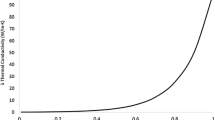Abstract
Polymer liquid crystals (PLCs) have potential applications as printed wiring board materials and in other aspects of plastic packaging. They have a number of desirable properties such as low moisture absorption, thermoplastic behavior, and low thermal expansivity. However, PLCs can have significant anisotropy in expansivity with negative expansivities in the drawing or molding direction and relatively low positive expansivities in the transverse directions. By incorporating PLCs into an engineering polymer (EP) matrix, in our case a thermoplastic polyimide (TPI), we expected to be able to control the expansivity of the resulting blend - thereby aiding in long-term service performance and reliability. Properties such as low moisture absorption, dimensional stability at elevated temperatures, good adhesion properties, and reworkability were also sought. In this paper, we report on our work to process a TPI/PLC blend and characterize the thermal properties of the blends.
An amorphous TPI was chosen over a semicrystalline one because of a thermo-irreversible cold crystallization in the latter, causing undesirable changes in the morphology and poor adhesion to metals. Our evaluations of TPIs through thermally stimulated depolarization (TSD) and temperature-modulated differential scanning calorimetry (TMDSC) reveal sub-glass transition relaxations. We have investigated the selected semicrystalline TPI + PLC pair in the entire composition range, and concluded that the narrower range, up to 30 wt. % of the PLC, is sufficient for the achievement of our objectives. The glass transition temperature Tg = 240°C of the TPI determined by DSC is unaffected by variations of the PLC concentration. The cold crystallization temperature of the semicrystalline TPI decreases with increasing PLC concentration but upon formation of the LC-rich islands this effect becomes smaller. All the blends exhibit degradation onset temperature over 520°C. The thermal conductivity of the amorphous TPI + PLC blends varies as a function of the PLC concentration. The blends show very good film formability. The addition of the PLC improves the processability of the TPI. Thermomechanical analysis (TMA) reveals that the desired control of the expansivity of the blends is also achieved by varying the PLC concentration.
Similar content being viewed by others
References
W. Brostow, Kuntstoffe, 78, 411 (1988).
W. Brostow, Polymer, 31, 979 (1990).
W. Brostow and R. D. Corneliussen, eds., Failure of Plastics, Hanser Publishers, Munich-Vienna-New York, 1986, 1989, 1992.
R. Aschenbrenner, J. Gwisada, J. Eldring, E. Zakel and H. Reichl, Interlational Electronics Packaging Conference, 794 Atlanta, Georgia (1994).
N. R. Basavanhally, D. D. Chang, B. H. Cranston and S. G. Seger, IEEE transactions on components, hybrids and manufacturing technology, 15, 972 (1992)
R. Dietz and D. Peck, International Electronics Packaging Conference, 397Atlanta, Georgia, (1994).
J. B. Friler and P. Cebe, Polymer Eng. and Sci. 33, 587 (1993).
B. S. Hsiao, B. B. Sauer and A. Biswas, J. Polymer Sci. Phys., 32, 737 (1994).
Y. Aihara and P. Cebe, Polymer Eng. and Sci. 34, 1275 (1993).
W. Brostow, N. A. D’Souza and B. Gopalanarayanan, Proc. ann. Tech. Conf Soc. Plast. Engrs., 55, 1499 (1997).
W. Brostow, N. A. D’Souza and B. Gopalanarayanan, Polymer Eng. and Sci., 38, 204 (1998).
C. L. Choy, Y. W. Wong, K. W. E. Lau, Guangwu Yang, A. F. Lee, J. AppL Polymer Sci. Phys., 33, 2055 (1995).
Y. Godovsky, Thermophysical Properties of Polymers, Springer-Verlag Berlin, New York (1994).
Author information
Authors and Affiliations
Rights and permissions
About this article
Cite this article
Brostow, W., D’Souza, N.A., Gopalanarayanan, B. et al. Evaluation of Potential Printed Wiring Board Materials: Thermoplastic Polyimide + Polymer Liquid Crystal Blends. MRS Online Proceedings Library 515, 125–130 (1998). https://doi.org/10.1557/PROC-515-125
Published:
Issue Date:
DOI: https://doi.org/10.1557/PROC-515-125




